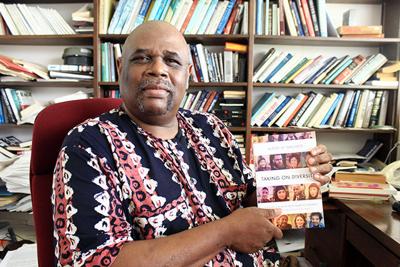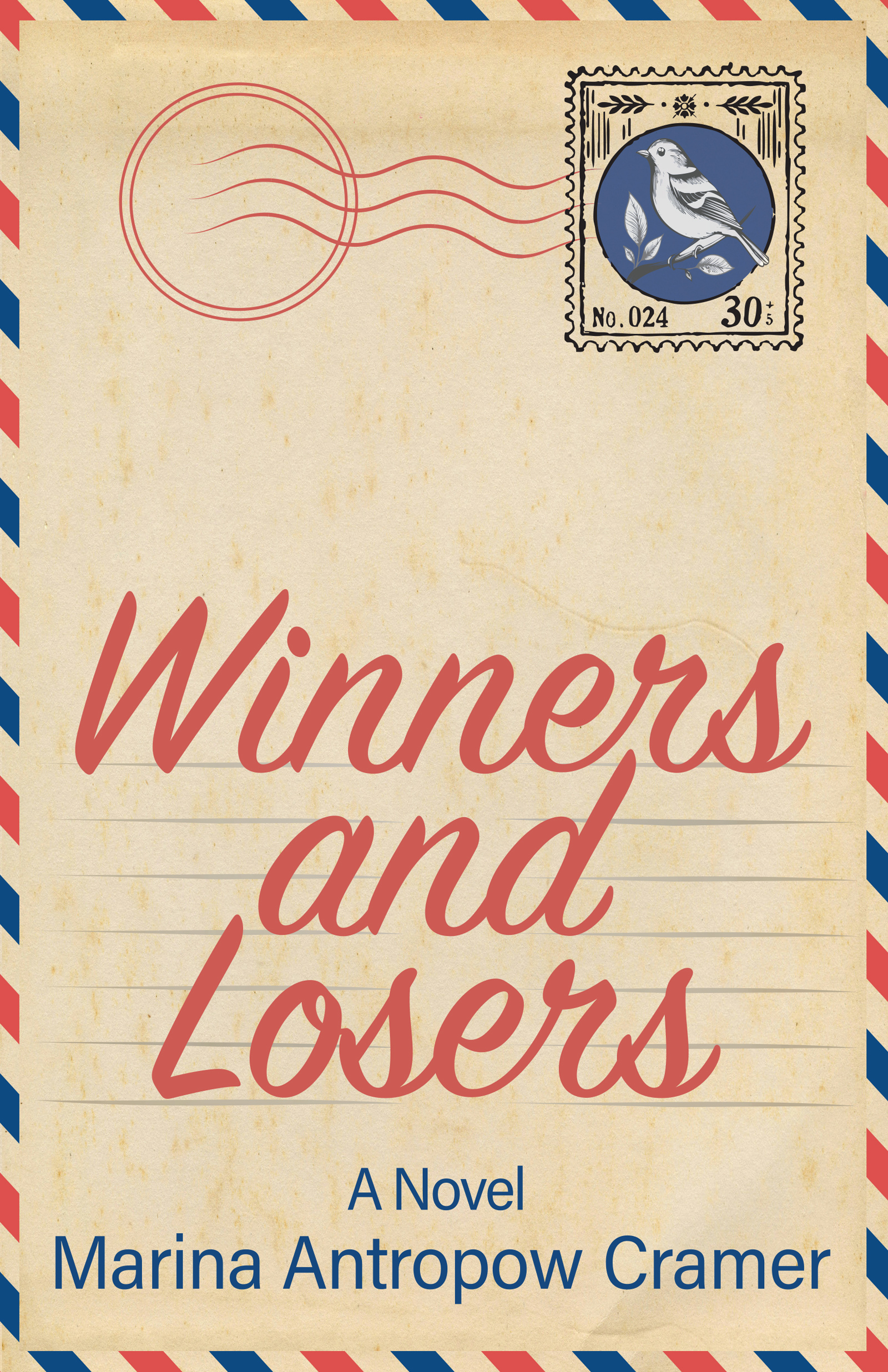To Live Woke is built upon Nacoste’s experiences to help us understand–and what we can do about the fact–that America’s unavoidable neo-diversity is being used by those who peddle fear of “them” to tear at the soul of America. The country is being ravaged by intentionally emboldened bigotry that we are vulnerable to because of our nation’s new anxieties about how to interact with people “…not like me.” Using stories from his life and college teaching, in short essay chapters, Nacoste gives the reader think pieces about today’s American neo-diversity anxieties. He lays out concrete interpersonal strategies anyone can use to confront and disempower bigotry in their everyday social interactions.
To Live Woke is a call to personal action. A call to Americans to live in a way that embraces our nation’s neo-diversity. We can save the soul of America. In this book, Nacoste shows the many Americans who really want us to build that more perfect union, how each can contribute to that effort, how each of us can play our personal part in saving the soul of America, how each of us can “…live woke.”
Q: Throughout To Live Woke, you use the term “neo-diversity.” What does neo-diversity mean to you?
A: Although I coined the term, neo-diversity is a social-scientific concept. Neo-diversity refers to the modern interpersonal-situation we live in today. In our everyday life, we now all have to interact with people “…not like us.” That hasn’t always been true. For a long time, including the time I was growing up (1951-1969) we were a legally, racially segregated society at all levels. Wrong as that was, that legal, racial segregation meant that whites and blacks (like me) did not interact with other-race people in school, at church, in a public park, in a department store, in a restaurant, in our neighborhoods. What’s true now is we cannot avoid encountering and interacting with racial-others. Our interpersonal-situation has changed, and not just about racial encounters. Now we have interpersonal encounters with people of different religions (Muslim-Christian), sexual orientations, gender-identities, bodily-conditions and so on. That interpersonal situation is neo-diversity. Neo-diversity is a social reality.
Q: Where did the inspiration for To Live Woke come from?
A: Neo-diversity is a new social reality. My goal with all of the speaking, teaching and workshops I do on neo-diversity is to help Americans adjust to this new interpersonal reality. Neo-diversity, you see, can cause people to feel anxious in social interaction, and that can lead to real interpersonal mistakes. Those mistakes can be misconstrued as meaning interacting with racial-others or any “group others” is somehow wrong and asking too much. I work to help people understand the reality of neo-diversity and how adjusting to and respecting neo-diversity makes our nation stronger. I wrote “To Live Woke” with that goal and in that spirit.
Q: What does To Live Woke mean to you?
A: I grew up in an activist, African American, household. A janitor and a school bus driver, my father was a passionate grassroots politician, working on voting rights for black people. My mother was an elementary school teacher who even “after school,” even in the summers, worked with black children to empower them through education. Neither my mother or my father, however, would have put a label on their social justice work. Today, people declare themselves to be “woke” when they start to think about social justice matters in a concrete way. To capture my father and my mother’s orientation to and actual social/racial justice work, the idea of being “woke” would have to be expanded to be more than a self-declaration. For me, given my family’s activism, to be woke means doing the work without self-congratulations, without name-calling and without creating and supporting psychological divisions. In Chapter 37-“Hope”- it was fun to talk about the different ways my father and mother did social justice work. I did so to illustrate that we don’t all have to be doing the same thing to be “woke.” As the saying goes, “…the apple does not fall far from the tree,” and I got to write about the connections between me and my mother and father. With my parents in mind, then, I say that to be woke is to do what it takes to work with whoever is pushing for some form of real social justice, no matter their group membership, current strategy or past passiveness.
Q: What is your favorite chapter in To Live Woke?
A: Two chapters immediately come to mind. Chapter 6-“From Anxiety to Respect”- is where I begin to show how I end up in many different spaces giving a presentation on neo-diversity to help an organization with a problem. Chapter 6 was fun because I can tell the story of how I end up at a high school because of a guidance counselor, a former student, who took my social psychology course when she was at NC State in the 1990s. Chapter 38-“The Long View of a Jealous Guardian”- is the other one that popped into my head when I read this question. That chapter was really fun to write because using one week of travel and speaking, I bring the reader up to date on my scholar-activist work. This was a week that included speaking on campus, travel to Shippensburg University to do four workshops and speak to that campus about neo-diversity, returning to Raleigh to moderate a conversation between two Parkland School shooting survivors, “March for our Lives” teenagers at a local bookstore. Even just writing that chapter I felt exhilarated.
Q: In chapter 21 “Jokes and Pokes About Other Folks,” you touch on the subject of jokes about ethnicity and race, and how jokes are jokes until they’re not. Where does one draw the line?
A: The line is bigotry. Throughout To Live Woke I explain and show the differences between prejudice, bigotry and racism. I do so to help everyone learn that prejudice and bigotry come from and through individuals, and that bigotry is an individual behavior expressing prejudice. Jokes about group membership (female, male, white, black, etc) always rely on a negative group evaluation (prejudice) in the form of a stereotype. Expressing that negative stereotype through a “joke” is a verbal behavior, so it is bigotry. When the humor of a so-called “joke” supports a group stereotype that reinforces a claim of us versus them, the goal of that “joke” is to say one group’s way of being is “less than” rather than just different, and so it is OK to make fun of “them.” That bigotry is not “harmless” because that bigotry pushes individuals toward us versus them ways of thinking and interacting. Check the news and you’ll see that that is not harmless.
Q: What is “to live woke”? Is this including everyone and what/who they identify as?
A: Again, neo-diversity is the interpersonal situation we are all experiencing in our everyday social interactions. “To live woke” means, in one sense, to have an orientation of respect for the neo-diversity of people we interact with. America was founded on the idea that all are created equal. Now that, finally, we are not segregated from each other, that neo-diversity situation requires us to live up to that claim of respect for each other; that interpersonal situation requires that we all “…live woke” to fulfill the real American dream.
Q: How long did it take you to write To Live Woke?
A: Through the lens of my expertise as a social psychologist, I am a social observer. Conversations with my students, events on my and other college campuses, event-headlines from all over America in general became the sources for my essays. Doing it that way, I wrote versions of these essays over a four-year period of observing events and writing the essays to try and give people a way to understand events that sometimes seemed to make no sense. Then I took a year to revise and update those essays, and craft them into a coherent book.
Q: Did anyone inspire you to write To Live Woke? Or was it purely out of personal experiences?
A: As a social observer, I was seeing so many young people making dreadful mistakes when it comes to interacting in our neo-diverse nation. Almost every day we see some example; high school students chanting racial or anti-gay and lesbian slurs; group-chats and Facebook post filled with anti-Jewish slurs; at a basketball game, college students taunting a gay basketball player. Why? Young people are not taught the truth about our intergroup histories and so are not taught how inappropriate it is to “joke” about fellow Americans no matter their demographic group membership. With that, young people are not taught the harm they can do to individuals and to the American dream of a “…more perfect union.” I want to help bridge that lack of information and understanding. I want us, young and old, to work to save the soul of the real American dream. That is my inspiration.
Q: What made you write your book in essay format?
A: Small bites. My work on neo-diversity takes us all into a difficult conversation. That means that although the hard truth must be put out on the community table, it must also be delivered in a way that people can process without choking on it. Small bites; that’s what the essay format provides. In this case, each essay leads to the next essay, leads to a building up of new thoughts and insights. That also explains my subtitle; “Thoughts to carry in our struggle to save the soul of America.”
Q: Where do you see this book going?
A: In one way or another, I have been an activist for over forty years. I especially want this book in the hands and on the minds of all the potential and new activists in America. With neo-diversity, old and new arenas of work for social justice have come to the attention of many Americans. When there are so many social justice issues, to do productive social justice work people need a way to understand that all of us are working toward the same goal; the elimination of the influence of bigotry against any group. So, people working on issues other than the one you are working on right now are not working against you; they are not the enemy. Bigotry and discrimination are the enemies. My hope is that my book will help new activist understand the neo-diverse mix of social justice issues that have to be addressed and see the need to support each other’s efforts to fight bigotry. In my book, I am laying out the issues of neo-diversity to give all Americans but especially activists, a concrete way to see what Martin Luther King, Jr. meant when he said, “Injustice anywhere is a threat to justice everywhere.” There’s a lot to work on in a neo-diverse America. As I say in To Live Woke, “On the American journey toward a more perfect union, we must be foolish enough to take every opportunity to create coalitions and collaborations.” Rather than trolling other people’s efforts and strategies, let’s support each other and collaborate when we can.

